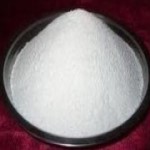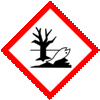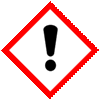 |
King of Chemicals Manufacturers |
Specifications, Properties, Uses, SDS of Zinc Acetate USP BP Ph Eur Analytical Reagent Grade Manufacturer Supplier Exporter Wholesale & Small Packs, CAS Number 5970-45-6 Dihydrate 557-34-6 Anhydrous. |
|
| King of Chemicals has several associated companies having accreditations like cGMP, GLP - FDA Approved Good Manufacturing Practice and Good Laboratory Practice of WHO standard, ISO-9001, ISO-14001, ISO/IEC 17025, ISO ISO-45000, HACCP, FSSC 220000, FSSAI, "REACH" Registered, Kosher & Halal Certified. e-CTD and DMF support can be made available if needed. We offer USP NF BP Ph Eur EP IP JP Analytical Reagent FCC Food Grade Chemicals & Nutraceuticals. | |
        |
|
Muby Chem Pvt. Ltd. is a several decades old group of companies, engaged in manufacturing, supplying, distributing, wholesale supplies of Zinc Acetate USP BP Ph Eur Reagent Grade for actual users, including retail or small pack supplies for research and development work.
We supply fine and speciality chemicals, pharmaceutical excipients, mineral fortifiers in chemically pure, analytical reagent grade, IP BP USP Ph Eur EP JP and other pharmaceutical grade monograph including FCC Food grade chemicals and Nutraceuticals at best prices. We and/or our associated units have all the facilities to supply as per cGMP standard observing good manufacturing practice and good laboratory practice. We can assure low microbial count and also offer a test certificate for the same. We maintain warehouses across USA, India, and UAE. Our group exports to USA, Canada, Mexico, Argentina, Brazil, Chile, Korea, Malaysia, Thailand, Indonesia, Europe, and several other parts of the world. We supply in wholesale container loads to small pack of few grams. Solid products may be specified for it size and shape as desired by the buyer.









Zinc Acetate CAS Number 5970-45-6 Dihydrate 557-34-6 Anhydrous
For Properties Specifications Uses of Zinc Acetate Click Properties, Specifications, Uses, Price, Process of Zinc Acetate Manufacturer.
For For SDS MSDS Sheet of Zinc Acetate Click SDS Safety Data Sheet MSDS Sheet of Zinc Acetate Manufacturer.
The Properties, Specifications, Monograph and Uses of Zinc Acetate:
CAS Number 5970-45-6 Dihydrate 557-34-6 Anhydrous, Molecular Weight: 219.51, Chemical Formula: (CH3COO)2Zn-2H2O for Dihydrate, EINECS EC Number: 209-170-2, HS Code 29152990 or 30049099
Zinc acetate is an acetate salt in which the cationic component is zinc(2+). It has a role as an astringent. Zinc is a naturally occurring mineral. Zinc is important for growth and for the development and health of body tissues. Zinc acetate is used to treat and to prevent zinc deficiency. Zinc acetate may also be used for other purposes. Zinc acetate is available in both anhydrous form and as a dihydrate. It commonly occurs as the dihydrate Zn(CH3CO2)2-2H2O. Both are white crystalline solids. It is used to preserve wood, to make other zinc compounds, as a food and feed additive. It has been used in lozenges for treating the common cold. Zinc acetate is also sold as an astringent in the form of an ointment, a topical lotion, or combined with an antibiotic such as erythromycin for the topical treatment of acne.It is commonly sold as a topical anti-itch ointment.
Zinc Acetate USP Grade Specifications:
C4H6O4Zn-2H2O --- 219.50
C4H6O4Zn --- 183.48
Acetic acid, zinc salt, dihydrate;
Zinc acetate dihydrate CAS 5970-45-6
Zinc acetate anhydrous CAS 557-34-6
DEFINITION
Zinc Acetate contains NLT 98.0% and NMT 102.0% of C4H6O4Zn-2H2O.
IDENTIFICATION
A. Identification Tests - General, Zinc: A 50 mg/mL solution meets the requirements.
B. Identification Tests - General, Acetate: A 50 mg/mL solution meets the requirements.
ASSAY
Procedure
Sample solution: To 400 mg of Zinc Acetate in 100 mL of water add 5 mL of ammonia-ammonium chloride buffer and 0.1 mL of eriochrome black.
Analysis: Titrate the Sample solution with 0.05 M edetate disodium until the solution is deep blue in color. Each mL of 0.05 M edetate disodium is equivalent to 10.98 mg of zinc acetate dihydrate (C4H6O4Zn-2H2O).
Acceptance criteria: 98% to 102%
Chloride and Sulfate, Sulfate: A 1.0-g portion shows no more sulfate than corresponds to 0.10 mL of 0.020 N sulfuric acid (0.010%).
Arsenic: NMT 3 ppm
Lead: To pass the test, --- (0.002%).
Alkalies and Alkaline Earths:
Sample solution: Dissolve 2.0 g in 150 mL of water in a 200-mL volumetric flask. Add sufficient ammonium sulfide TS to precipitate the zinc completely and dilute with water to volume. Pass through a dry filter, rejecting the first portion of the filtrate.
Analysis: To 100 mL of the filtrate add 5 drops of sulfuric acid. Evaporate to dryness and ignite.
Acceptance criteria: The weight of the residue does not exceed 2 mg (0.2%).
Insoluble Matter: A 20-g portion, dissolved in 150 mL of water containing 1 mL of glacial acetic acid, shows NMT 1.0 mg of insoluble matter (0.005%).
pH: 6 to 8, in a solution (1 in 20)
Packaging and Storage: Preserve in tight containers.
Specifications of Zinc Acetate BP Ph Eur Grade:
C4H6O4Zn-2H2O --- 219.5 --- CAS 5970-45-6
Action and use: Astringent.
DEFINITION
Content: 99.0 per cent to 101.0 per cent of C4H6O4Zn,2H2O.
CHARACTERS
Appearance: White or almost white crystalline powder or flakes.
Solubility: Freely soluble in water, soluble in ethanol (96 per cent).
IDENTIFICATION
A. It gives reaction of acetates.
B. It gives the reaction of zinc.
TESTS
Solution S: Dissolve 10.0 g in carbon dioxide-free water prepared from distilled water and dilute to 100 mL with the same solvent.
Appearance of solution: Solution S is clear and colourless.
pH: 5.8 to 7.0.
Dilute 10 mL of solution S to 20 mL with carbon dioxide-free water.
Reducing substances: Boil for 5 min a mixture of 10 mL of solution S, 90 mL of water, 5 mL of dilute sulfuric acid and 1.5 mL of a 0.3 g/L solution of potassium permanganate. The pink colour of the solution remains.
Chlorides: Maximum 50 ppm.
Sulfates: Maximum 100 ppm, determined on solution S.
Aluminium: Maximum 5 ppm.
Arsenic: Maximum 2 ppm, determined on 0.5 g.
Cadmium: Maximum 2 ppm.
Copper: Maximum 50 ppm.
Iron: Maximum 50 ppm.
Lead: Maximum 10 ppm.
Specifications of Zinc Acetate Dihydrate Reagent
(CH3COO)2Zn-2H2O
Formula Weight 219.51
CAS Number 5970-45-6
REQUIREMENTS
Assay: 98.0-101.0% (CH3COO)2Zn-2H2O
pH of a 5% solution: 6.0-7.0 at 25C
Insoluble matter: 0.005%
Chloride (Cl): 5 ppm
Sulfate (SO4): 0.005%
Calcium (Ca): 0.005%
Magnesium (Mg): 0.005%
Potassium (K): 0.01%
Sodium (Na): 0.05%
Iron (Fe): 5 ppm
Lead (Pb): 0.002%
The MSDS-SDS Hazard Statement of Zinc Acetate:
Zinc Acetate SDS GHS, Safety Data Sheet
MSDS, Material Safety Data Sheet 29-Jul-21
1. PRODUCT DESCRIPTION
Product Name & Other Names: Zinc Acetate.
Synonyms: Acetic acid zinc salt or Zinc diacetate.
CAS Number: 5970-45-6 Dihydrate 557-34-6 Anhydrous
EINECS EC Number: 209-170-2
Formula: (CH3COO)2Zn-2H2O for Dihydrate & (CH3COO)2Zn for Anhydrous.
Recommended usage: Industrial Manufacturing.
Suppliers: As per letterhead.
2. HAZARD IDENTIFICATION
GHS, Globally Harmonized System Classification in accordance with 29 CFR 1910
Classification according to Regulation (EC) No 1272/2008
Acute toxicity, Oral Category 4, H302
Skin corrosion/irritation Category 3, H316
Serious eye damage/eye irritation Category 2A, H319
Hazardous to the aquatic environment, long-term hazard Category 1, H410
Labelling according to GHS & Regulation (EC) No 1272/2008
GHS Label Elements  Aquatic Toxicity |
GHS Label Elements |
Signal Words: Warning
Hazard statements:
H302: Harmful if swallowed.
H316: Causes mild skin irritation.
H319: Causes serious eye irritation.
H410: Very toxic to aquatic life with long lasting effects.
Precautionary statements:
P262: Do not get in eyes, on skin, or on clothing.
P264: Wash skin thoroughly after handling.
P270: Do not eat, drink, or smoke when using this product.
P273 Avoid release to the environment.
P280: Wear protective gloves/protective clothing/eye protection/face protection.
P314: Get Medical advice/attention if you feel unwell.
P330: Rinse mouth.
P301+312: IF SWALLOWED: Call a POISON CENTER or doctor/physician if you feel unwell.
P332+313: If skin irritation occurs: Get medical advice/attention.
P305+P351+P338: IF IN EYES: Rinse cautiously with water for several minutes. Remove contact lenses, if present and easy to do. Continue rinsing.
P337+P313: If eye irritation persists: Get medical advice/ attention.
P360: Rinse immediately contaminated clothing and skin with plenty of water before removing clothes.
P391: Collect spillage.
P501: Dispose of contents/container in accordance with local/regional/national/international regulations.
3. COMPOSITION/INFORMATION ON INGREDIENTS
Product Name & Other Names: Zinc Acetate.
Synonyms: Acetic acid zinc salt or Zinc diacetate.
CAS Number: 5970-45-6 Dihydrate 557-34-6 Anhydrous
EINECS EC Number: 209-170-2
4. FIRST AID MEASURES
Eyes - Check for and remove any contact lenses. In case of contact, immediately flush eyes with plenty of water for at least 15 minutes. Cold water may be used. Get medical attention.
Skin - Thoroughly wash exposed area for at least 15 minutes. Remove contaminated clothing. Launder contaminated clothing before reuse. Get medical attention if irritation persists.
Ingestion - Do not induce vomiting unless directed to do so by medical personnel. Never give anything by mouth to an unconscious person. If large quantities of this material are swallowed, call a physician immediately. Loosen tight clothing such as a collar, tie, belt, or waistband.
Inhalation - Remove to fresh air. Give oxygen if breathing is difficult; give artificial respiration if breathing has stopped. Keep person warm, quiet, and get medical attention.
5. FIREFIGHTING PROCEDURES
Extinguisher Media: Use media suitable to extinguish surrounding fire.
Extinguishing Media Not recommended: Avoid using solid water jet as it may scatter the fire.
Special Information: In the event of a fire, wear full protective clothing and NIOSH-approved self-contained breathing apparatus with full face piece operated in the pressure demand or other positive pressure mode. At high temperatures under fire conditions, it may produce toxic or irritating fumes. Fire-extinguishing work is done from the windward and the suitable fire-extinguishing method according to the surrounding situation is used. Uninvolved persons should evacuate to a safe place.
6. SPILL OR LEAK PROCEDURES
Personal precautions, protective equipment, and emergency procedures: Avoid breathing dust/fumes/gas/mist/vapors/spray. Use individual protective equipment (waterproof boots, suitable protective clothing, safety glasses, etc.). Restrict unprotected personnel from the area. Prevent any contact with hot surfaces. Do not approach facing the wind. Do not touch the spilled material.
Environmental precautions: Do not let the product enter drains, soil, or water sources.
Methods and materials used for containment cleanup procedures and Storage: Do not inhale dust, vapors, mist, or gas. Avoid dust formation. Contain spilled material. Cover with an inert, non-combustible absorbent material, (e.g., sand, earth, diatomaceous earth, vermiculite). Use a shovel to put the material into a convenient waste disposal container. Finish cleaning by spreading water on the contaminated surface and allow to evacuate as per law.
7. SPECIAL PRECAUTIONS
Precautions for safe handling: Apply according to good manufacturing and industrial hygiene practices. Ensure proper ventilation. In case of insufficient ventilation, wear suitable respiratory equipment. Wash thoroughly after handling. Do not drink, eat, or smoke while handling. Avoid contact with skin, eyes, and clothing. Minimize dust generation. Avoid breathing dust/fumes/gas/mist/vapors/spray. Avoid contact with eyes, skin, and clothing. Keep container tightly closed. Avoid ingestion and inhalation. Use individual protective equipment (waterproof boots, suitable protective clothing, safety glasses, etc.). Prevent any contact with hot surfaces.
Conditions for safe storage, including any incompatibilities: Store in cool, dry, and ventilated area away from heat sources and protected from sunlight in tightly closed original container. Keep air contact to a minimum. Store protected from heat, sparks and ignition sources and incompatible materials. Avoid contact with skin and eyes. Avoid inhalation of dust/mist/vapor. Do not store with incompatible materials like strong oxidizing agents and alkalis. Keep away from sources of ignition. Ground all equipment containing material.
8. SPECIAL PROTECTION INFORMATION
Exposure Limits: This product does not contain any hazardous materials with occupational exposure limits established by the region-specific regulatory bodies.
Respiratory Protection (Specify Type): None needed under normal conditions of use with adequate ventilation. NIOSH approved equipment should be worn if PELs are exceeded.
Ventilation System: A system of local and/or general exhaust is recommended to keep employee exposures as low as possible. Local exhaust ventilation is generally preferred because it can control the emissions of the contaminant at its source, preventing dispersion of it in work area.
Personal Respirators (NIOSH Approved): For conditions of use where exposure to dust or mist is apparent and engineering controls are not feasible, a particulate respirator may be worn. For emergencies or instances where the exposure levels are not known, use a full-face positive-pressure, air-supplied respirator.
Skin Protection: Wear protective gloves and clean body-covering clothing.
Eye Protection: Use chemical safety goggles and/or full-face shield where dusting or splashing of solutions is possible. Maintain eye wash fountain and quick-drench facilities in work area.
Other Control Measures: Maintain good housekeeping in work area. Dust deposits on floors and other surfaces may pick up moisture and cause the surfaces to become slippery and present safety hazards. Handle in accordance with good industrial hygiene and safety practice.
9. PHYSICAL DATA
Appearance and Odor: Zinc Acetate is white crystals, faint acetic acid odor
Odor: Not available.
Odor threshold: Not available.
pH: Not available.
Relative density: about 1.74 for Dihydrate.
Melting point/freezing point: Not available.
Initial boiling point and boiling range: Not available.
Flash point: Not available.
Auto-ignition temperature: Not available.
Decomposition temperature: Not available.
Upper/lower flammability or explosive limits: Not available.
Vapor pressure: Not available.
Vapor density: Not available.
Evaporation rate: Not available.
Flammability (solid, gas): Not available.
Partition coefficient: n-octanol/water: Not available.
Solubility in Water: Appreciable (>10%)
Viscosity: Not available.
Molecular Weight: 219.51 for Dihydrate.
Melting Point: 237 C (458 F) for Dihydrate.
10. REACTIVITY DATA
Stability: Zinc Acetate is stable
Conditions to Avoid: Heat
Incompatibility (Materials to Avoid): Alkalis, strong oxidizing agents
Hazardous Decomposition Products: Oxides of Zinc, carbon monoxide, carbon dioxide
Hazardous Polymerization: Will not occur.
11. TOXICITY DATA
Toxicity Data: oral rat LD50: 2460 mg/kg.
Carcinogenicity: No component of this product present at levels greater than or equal to 0.1% is identified as possible or confirmed human carcinogen by IARC, ACGIH, OSHA and NTP.
Teratogenic Effects: Not available.
Mutagenic Effects: Not available.
Developmental Toxicity: Not available.
Reproductive Effects: No information available.
12. ECOLOGICAL DATA
Toxicity to fish: LC50 - Oncorhynchus mykiss (rainbow trout) - 0,55 mg/l - 96,0 h
Persistence and Degradability: Unlikely to persist due to water solubility.
Mobility: Likely to be mobile due to water solubility.
Bioaccumulation/ Accumulation: No information available.
Results of PBT and vPvB assessment: No data available for assessment.
Other adverse effects: Very toxic to aquatic life with long lasting effects.
13. DISPOSAL INFORMATION
Waste Disposal Methods: Dispose of in accordance with all legal regulations.
14. TRANSPORT INFORMATION
Land Transport DOT USA, TDG Canada & ADR/RID Europe:
UN number: 3077
Proper shipping name: Hazardous substance, solid, n.o.s. (Zinc Acetate)
Hazard class(es): 9, Packaging group: III
Sea Transport IMDG/IMO & Air Transport IATA/ICAO:
UN number: 3077
Proper shipping name: Hazardous substance, solid, n.o.s. (Zinc Acetate)
Hazard class(es): 9, Packaging group: III.
15. REGULATORY INFORMATION
USA Regulations:
California Proposition 65: Not listed.
SARA 311/312 Hazards: See section 2.
Section 16 - Additional Information
DISCLAIMER: The information and recommendations set forth herein are presented in good faith and believed correct as of the date hereof. It is compiled from various sources, and it is not necessarily all inclusive nor fully adequate in every circumstance. In addition, these suggestions should not be confused with nor followed in violation of applicable laws, regulations, rules, or insurance requirements applicable. This SDS MSDS sheet is intended only as a guide to the appropriate precautionary handling of the material by a professionally trained person using this product. Individuals receiving the information must exercise their independent judgment in determining its appropriateness for a particular purpose. This shall not constitute a guarantee for any specific product features and shall not establish a legally valid contractual relationship. In no case shall our company be liable to loss or damages by the product user.

Zinc Acetate Manufacturers, Suppliers, Exporters, Wholesalers:
King of Chemicals manufacturers

Plot No. 2900/46&47 + 2900/163to167, GIDC, Ankleshwar, Dist. Bharuch, India
India, USA, UAE
TEL: (Office) 91-22-23774610, 91-22-23723564
e-mail: info@kingofchemicals.com
Copyright and Usual Disclaimer is Applicable --- April 7, 2025
If I give you “My Word” Nobody can undo it.
If I sign an “Agreement” my Lawyer will undo it
Our products are for industrial and laboratory use only. The user must test the material before use. We are not dispensing chemists or druggist and do not offer over the counter type (OTC) products for medical use by individuals.
We and our associates manufacture pure chemicals surpassing Monograph Specifications of Analytical Reagent Standards, British & European Pharmacopoeia BP Ph Eur EP Standard, US Pharmacopoeia USP NF Standard, Indian Pharmacopoeia IP Standard, Japan Pharmacopoeia JP Standard, FCC Food Grade Standard. |
|
